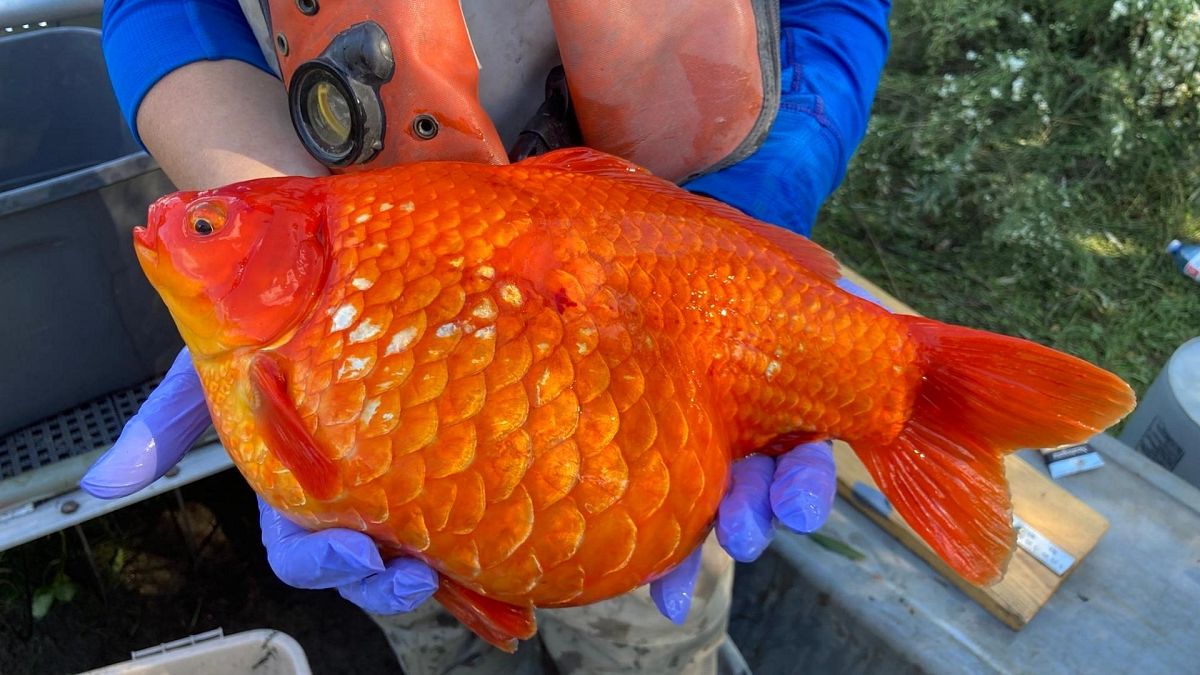Goldfish thrive in Canada’s stormwater ponds and affect local ecosystems.
If you’ve ever wondered what would happen to your goldfish in the wild, take a look at these giant examples. Pet goldfish released into stormwater ponds are becoming a large-scale problem in Canada.
These fish, native to East Asia, are “intermediate producers,” meaning they can continue to grow throughout their lives and will grow if conditions are favorable.
Although it is a myth that goldfish only grow to the size of their tank – living in an enclosure too small for them causes stress to the fish, stunting their growth – under the right conditions, fish Red ones will grow larger than the ones you usually see in pet stores.
By releasing hormones, they are even able to regulate their size and that of the fish around them, depending on the availability of natural resources. And with such abundant food sources in Canada’s waterways, their growth is reaching epic proportions.
Where do invasive goldfish live?
For several months, scientists from Fisheries and Oceans Canada have been tracking the movements of invasive goldfish using acoustic tags, a small sound-emitting device attached to the fish’s belly.
In October 2021, biology professor Nick Mandrak of the University of Toronto Scarborough discovered more than 20,000 goldfish living in a stormwater pond outside Ontario.
“These ponds are extreme environments,” Mandrak told the university magazine.
“Not only is the water shallow, but oxygen levels are extremely low and temperatures can reach over 30 degrees in summer.”
It is their ability to survive in such harsh environments that leads to the formation of large schools in the wild. Goldfish reproduce too quickly, which, coupled with their ability to thrive in oxygen-poor waters, worries scientists.
As oxygen levels in the water decline due to climate change, they worry that fish will have a competitive advantage over native species, which could lead to monocultures, as Mandrak points out. »Are we creating “super-invaders” which are likely to have increasingly significant impacts on nature due to climate change?
Unlike many species of fish, goldfish can survive in water containing toxic blue-green algae and can even help it grow.
How do these super-invaders affect native fish?
In addition to being fast breeders, goldfish are also big eaters. Large schools of fish can quickly destroy aquatic habitats by tear up plants.
Their feeding habits also stir up sediment, which clouds the water and reduces sunlight levels, limiting plant growth.
In addition to stormwater ponds, the fish were found in Hamilton Harbour, Ontario, a key spawning site for native fish species like northern pike. Scientists fear they could even end up in the Canadian Great Lakes in the future if their numbers don’t decline.

“Freelance communicator. Hardcore web practitioner. Entrepreneur. Total student. Beer ninja.”







